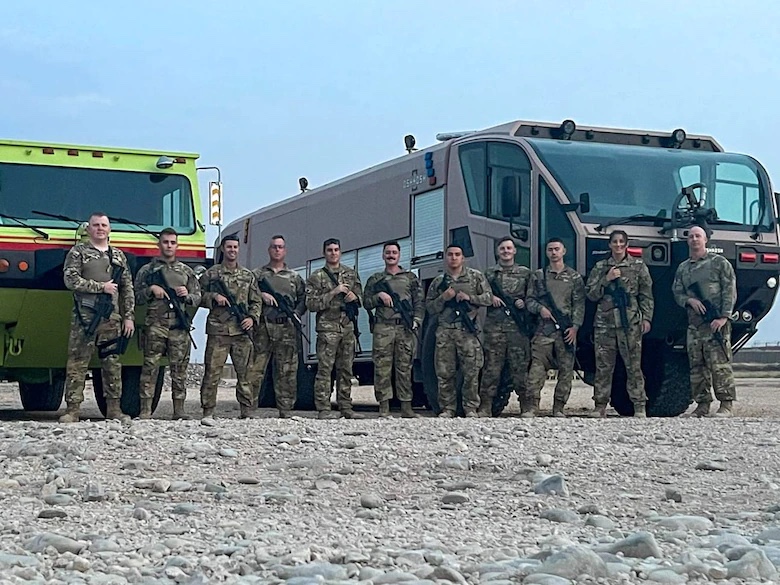
ALI AL SALEM AIR BASE, Kuwait (AFNS) —
A quick reaction force is an elite unit comprised of Airmen from multiple squadrons trained in combat and evasion. These Airmen are not only highly-skilled professionals, but they undergo special training to perform their duties in austere and potentially hostile environments.
Recently, the QRF firefighter component from the 386th Expeditionary Civil Engineer Squadron, was sent to a forward operating base in Syria to provide support to its flight line.
“This team is made up of highly-qualified firefighting professionals trained for bare environments,” said Senior Master Sgt. Michael Rigsby, 386th ECES deputy fire chief. “We’re a rare group. Also, it’s just not very common for firefighters to get sent on a forward deployment. I’ve been in 16 years and this was my first time.”
The QRF firefighters’ purpose in Syria was to provide flight-line support per Air Mobility Command instructions. This allowed for a limitless number of aircraft to take off and land, and people and equipment to be removed for rotation. Their mission was to provide support so that the Army’s M2A2 Bradley Fighting Vehicle unit could be extracted and replaced.
“We flew in with three fire trucks and our firefighting equipment. The Army was due to change out their people and equipment, and our presence allowed more aircraft to land in a shorter time span,” Rigsby said. “That enabled the Army to keep their same level of base and area protection and perform change-out 16 days quicker.”
While the QRF firefighters are tactically trained to operate under hostile and combative conditions, their essential duties are the same as non-QRF firefighters. They are vital to safe and expedient flight-line standards.
“Our primary job on a flight line is to provide it with crash-fire support so that they can maintain air operations over the area of responsibility, and also to provide hazmat and medical support as well,” said Senior Airman Travis Ferrell, 386th ECES firefighter. “So if anything goes down on the flight line, we respond. Whether it’s an in-flight or ground emergency, we will respond to mitigate any possible crisis that could happen. We like to say we’re the insurance policy for anything that happens on the flight line.”
Without the firefighter component of QRF, the flight line would only be able to support a limited number of aircraft taking off and landing per week, but with the QRF, the number of flights were unlimited. They supported 15 aircraft at two per day during their 30-day mission.
QRF members went through pre-deployment combat skills training at McGregor Range, New Mexico, and Evasion, Conduct After Capture training at Joint Base San Antonio-Lackland, Texas. This type of training is for Airmen who will be operating outside the wire in high-risk environments.
“As QRF, we go to pre-deployment training so that we can deploy to places that don’t have established support, like FOBs,” Ferrell said. “Here, at Ali Al Salem (AB), we have great support and infrastructure, but we didn’t find that in Syria. We had nothing there.
We had to find our own water sources. We had to basically write our own standard operating procedures while we were out there on the fly. For instance, this is where we’re going to stage and this is how we’re going to respond,” Ferrell continued. “We get there. We make all these decisions. We face all these challenges, and then we complete the mission as quickly as we can, pack up and move on to somewhere else keeping the mission alive wherever we go.”
By SSgt Ryan Brooks, 386th Air Expeditionary Wing Public Affairs

